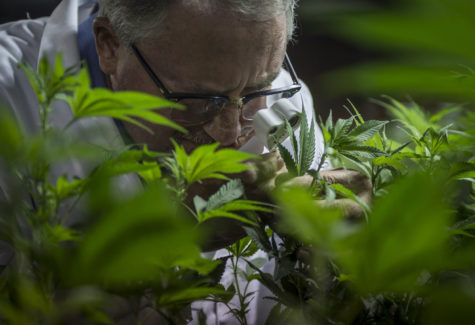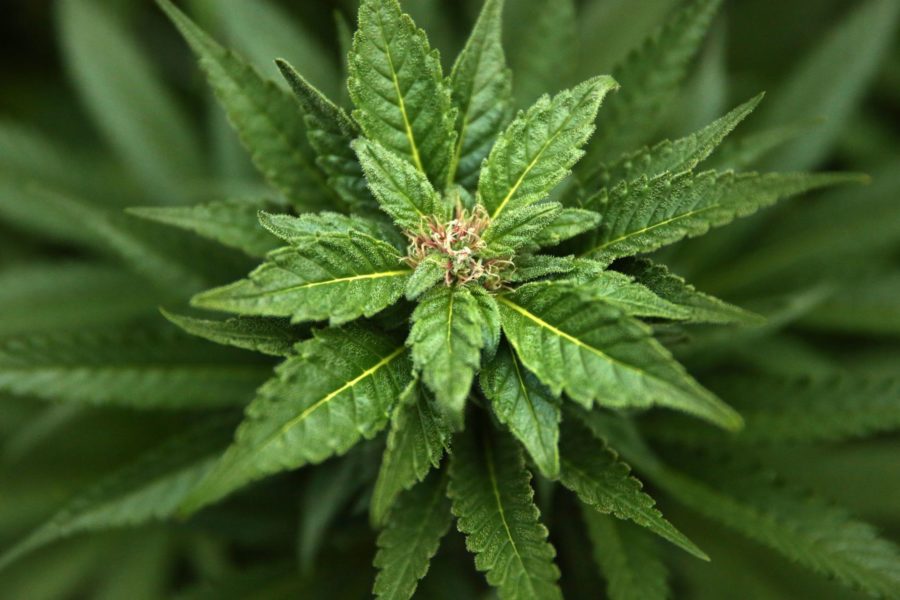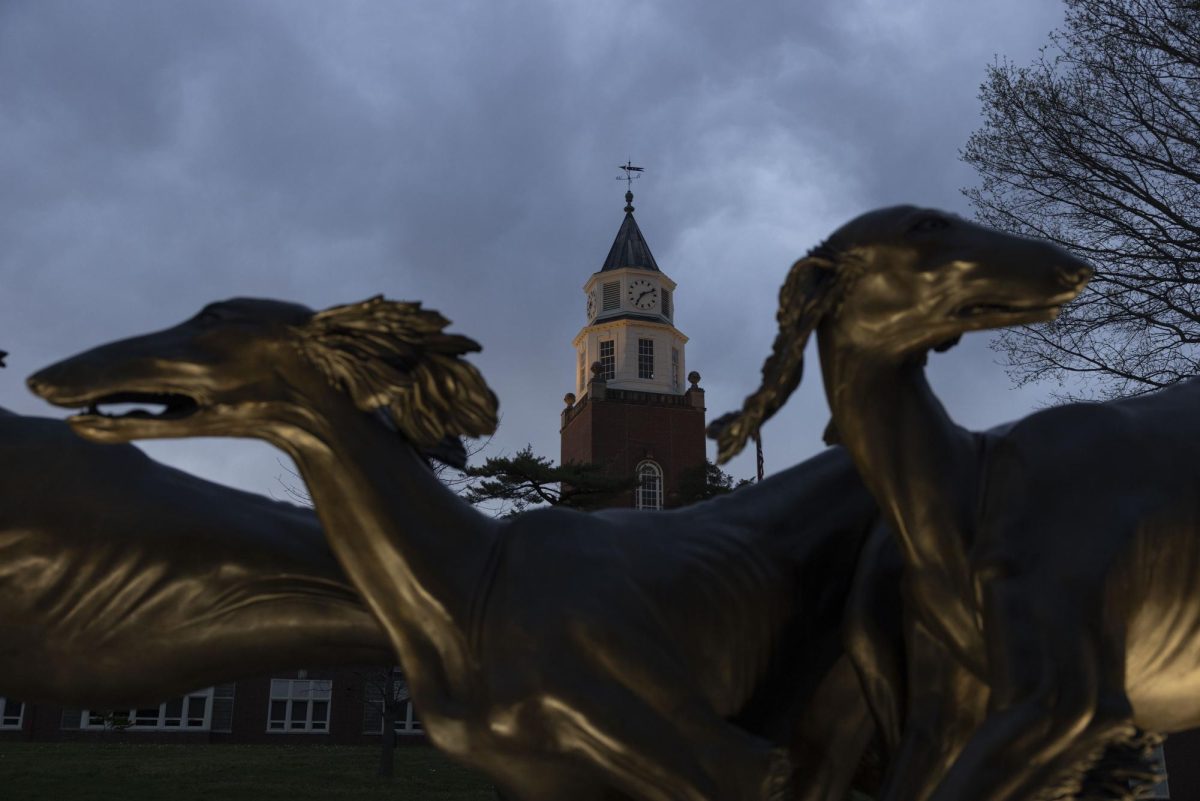Marijuana cultivation in Illinois is a professional operation: growers
August 15, 2016
JOLIET — Bright lights, swirling air and the pungent odor of maturing buds laced with sticky oil from thousands of plants with distinctive green leaves greet visitors at Cresco Labs’ medical marijuana cultivation center.
Officials from Chicago-based Cresco, who operate a growing facility in this northern Illinois city, as well as cultivation centers near Lincoln and in Kankakee, told news media invited for a tour of the Joliet facility last week that they want the public to be impressed by the security, cleanliness, professionalism and science involved in Illinois medical marijuana production.
“These facilities were specifically built for this purpose, and the scale of them is big enough to provide sufficient supply to the entire state,” said Charlie Bachtell, 38, Cresco Labs’ chief executive officer.
Advertisement
Cresco products are sold at cannabis dispensaries throughout the state, including HCI Alternatives in downtown Springfield, and they are available to the 8,900 patients enrolled in the state’s medical marijuana pilot program.
But the company has been frustrated that a major hurdle facing the young industry in Illinois is public perception.
The public thus far has been bombarded with “B-Roll” footage from marijuana growing facilities in California and Colorado, Bachtell said. The footage, played in the background whenever a new medical marijuana story is televised in Illinois, makes it appear that the industry here is less-than-professional, he said.
Until recently, it’s been difficult for Illinois investors to counter those images, he said.
‘Like a hospital’
Last week’s tour of the $11 million facility was part of willingness by the administration of Gov. Bruce Rauner to give the media more access to the growing centers, according to Jack Campbell, director of the state’s medical marijuana pilot program.
Before last week, the most recent access to a growing facility was limited to a few media outlets and took place in September at an Ataraxia cultivation center in the small southeastern Illinois community of Albion.
Advertisement*
The 40,000-square-foot Cresco center in Joliet and the one in unincorporated Logan County, costing $8 million to build and covering 25,000 square feet, both opened about the same time in November. The 40,000-square-foot Kankakee center, costing $10 million, opened in January.
The Joliet facility employs about 35 people, but that could more than double in the next year or two, Bachtell said. And the Lincoln facility employs eight, and that could increase to 40 or 50 in the next 12 months, he said.

Employees include factory-type workers and scientists. Their pay ranges from $30,000 to more than $100,000 per year, Bachtell said.
Campbell, a former Sangamon County undersheriff, said he is proud of the state’s 19 cultivation centers.
“They look more like a hospital to me,” he said.
Bachtell and Cresco president Rob Sampson led journalists through the Joliet building, a one-story, concrete-and-steel structure that sits on a slab in an industrial area of Joliet and carries no exterior signage except on the mailbox.
The all-indoor setup of the cultivation center, with multiple rooms for plants in different stages of development, as well as temperature control and fans to simulate natural wind, is designed with one purpose in mind, Bachtell said.
“We control the environment from start to finish,” he said. “We try to create the most consistent product we can create time after time after time.”
Rooms to grow
It takes 150 days to produce a medical marijuana crop, but because crops are staggered, there is a harvest every three to four weeks, Bachtell said.
Each plant is labeled with a bar code and tracked, for security reasons, as it proceeds from a cutting to being placed in a recyclable pot.
Plants are grouped by variation and by the chemical compounds known as cannabinoids — such as THC and CBD — that they contain. The plants, each worth hundreds of dollars in potential sales, are moved to different rooms, under powerful sodium lights and fed with liquid nutrients, to allow for pollination and hasten the growth cycle.
The largest rooms, 20 feet wide and 200 feet long, include “bud rooms” in which the flowers, which contain most of the psychoactive components of marijuana, mature.
Workers wear gloves and hair nets to avoid contaminating the buds while they care for and prune the plants.
“We are eliminating as much variance as possible,” said Jason Nelson, 35, the facility’s director of cultivation.
MORE: This SIU graduate student uses medicinal marijuana daily
Nelson, who holds a bachelor’s degree in agronomy and a master’s in horticulture, said he grew up in Kansas and previously worked at a marijuana growing facility in Denver.
Mature plants are cut and hung to dry for several weeks, accentuating their aroma and enhancing the quality of the oil inside.
Cresco Labs has a separate staff that produces edible products and packages marijuana oil for use in pills and E-cigarette cartridges, among other products.
That oil is removed from the buds on-site in enclosures that house equipment using alcohol or hydrocarbon gas to do the extraction.
It takes 10 grams of cannabis to make one gram of oil, said Mike West, the facility’s director of manufacturing. West, 29, a native of Texas, has an undergraduate law degree and studied biochemistry in college.
The company decided not to make any edible products that would be attractive to children, such as gummy bears, Bachtell said.
Cresco Labs developed a line of cannabis-infused dessert products in collaboration with Mindy Segal, owner of Chicago’s HotChocolate restaurant.
Growth industry
Bachtell wouldn’t reveal the amount of medical marijuana his company produces. He also wouldn’t reveal revenues, though he said the company hasn’t yet recouped its investment in buildings and equipment.
But he said he is confident in the future of the medical marijuana industry in Illinois. Retail sales of medical cannabis by dispensaries reached a new high of $2.9 million in July, according to state officials, with total retail sales since November reaching $16.3 million.
He believes the number of patients enrolled in the program could skyrocket to between 30,000 and 50,000 by the end of 2017 and reach 100,000 by the end of 2018.
The industry is poised for rapid growth in Illinois because of recent legislation and increasing awareness by the public, he said.
Bachtell said he believes more knowledge of the industry by Rauner, a Republican, and the Democratic-controlled General Assembly led to the recent passage of legislation that extends the life of the pilot program to July 2020 and adds to the medical conditions qualifying people for the program.
The changes, signed into law by Rauner and contained in Senate Bill 10, also could make doctors more willing to assist patients who want to get into the program.
Resistance by most doctors in the state has proved to be a major barrier for patients wanting access to medical marijuana. Because of the legislation, new forms that doctors must sign for patients to be considered for the program no longer call for doctors to say they believe their patients would receive a therapeutic or palliative benefit from marijuana.
Doctors just have to certify that their patients have one of the qualifying conditions.
“It doesn’t put the burden on the doctors to be the gatekeepers for the program,” Bachtell said. “We know that the patients are out there, and we know that there’s a desire to participate in the program. Every day that goes by, there’s more public and political support.”
Dr. Thomas Anderson, a Chicago radiologist and president of the Illinois State Medical Society, said the legislative change in the role of doctors — supported by the medical society — “will probably stimulate some additional physician participation.”
But a continuing problem is the federal government’s classification of marijuana as an illegal substance, he said.
Doctors worry about punishment from federal officials who have the power to yank doctors’ licenses to prescribe drugs, he said, and doctors also are wary of helping their patients gain access to a substance that has undergone little scrutiny in scientific studies in the United States.
But the state legislation will help doctors distance themselves legally from medical marijuana, so Anderson said, “It certainly will help matters.”
___
(c) 2016 The State Journal-Register, Springfield, Ill.
Visit The State Journal-Register, Springfield, Ill. at www.sj-r.com
Distributed by Tribune Content Agency, LLC.
Advertisement











Ivy williams • Aug 16, 2016 at 11:46 am
And who are they to insinuate Colorado’s California are any less professional than I’ll?